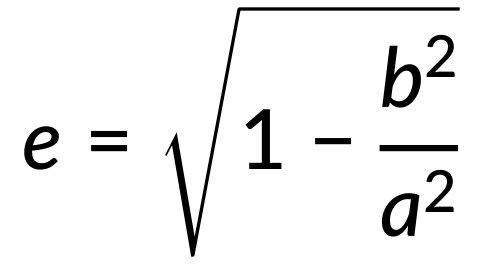14.15 : Kepler's First Law of Planetary Motion
In the early 17th century, German astronomer and mathematician Johannes Kepler postulated three laws for the motion of planets in the solar system. He formulated his first two laws based on the observations of his forebears, Nikolaus Copernicus and Tycho Brahe.
Polish astronomer Nikolaus Copernicus put forth a theory that stated a heliocentric model for the solar system. According to this heliocentric theory, all the planets, including Earth, orbit the Sun in circular orbits.
On the other hand, Danish astronomer Tycho Brahe, the employer of Johannes Kepler, had meticulously recorded the position of every planet in detail. For most visible planets, these observations were in accordance with the Copernican heliocentric theory, except for the planet Mars.
While analyzing the Mars data of Tycho Brahe, Johannes Kepler realized that the Copernican theory was accurate except that planets revolve around the Sun in an elliptical orbit rather than circular orbits. This led him to his first law of planetary motion, which states that every planet travels along an ellipse, with the Sun located at one of the ellipse's foci.
An ellipse is an elongated circle. The degree of elongation of an ellipse is expressed using a parameter called eccentricity.

An axis of an ellipse along the elongation is called the major axis a, and the one perpendicular to it is the minor axis b. Therefore, the eccentricity of an ellipse is expressed as

Since b < a, the eccentricity of an ellipse is always less than unity. For a circle, a = b, hence the eccentricity of a circle is zero.
The eccentricity of Martian orbit is 0.0935. It is considered to have the most eccentric orbit after Mercury, whose eccentricity is 0.21. Earth's orbit has an eccentricity of 0.0167.
Since planets are in elliptical orbits with the Sun at one of the foci, their radial distances change throughout the year. Their closest distance from the Sun is known as the perigee, while the farther distance is called the apogee.
This text is adapted from Openstax, University Physics Volume 1, Section 13.5 Kepler's Laws of Motion.
장에서 14:

Now Playing
14.15 : Kepler's First Law of Planetary Motion
Gravitation
3.8K Views

14.1 : 인력
Gravitation
6.0K Views

14.2 : 뉴턴의 중력의 법칙
Gravitation
12.2K Views

14.3 : 구형으로 대칭적인 질량 사이의 중력(Gravitation Between Spherically Symmetric Masses)
Gravitation
815 Views

14.4 : 구형체 사이의 중력(Gravity Between Spherical Body)
Gravitation
8.1K Views

14.5 : 감소된 질량 좌표: 고립된 2체 관련 문제
Gravitation
1.2K Views

14.6 : 지구의 중력으로 인한 가속도
Gravitation
10.4K Views

14.7 : 다른 행성의 중력으로 인한 가속도
Gravitation
4.0K Views

14.8 : 겉보기 무게와 지구의 자전
Gravitation
3.5K Views

14.9 : 지구 표면 근처의 중력으로 인한 가속도의 변화
Gravitation
2.3K Views

14.10 : 중력으로 인한 위치 에너지
Gravitation
5.4K Views

14.11 : 중첩의 원리와 중력장(The Principle of Superposition and the Gravitational Field)
Gravitation
1.3K Views

14.12 : 탈출 속도
Gravitation
5.5K Views

14.13 : 위성의 원형 궤도와 임계 속도
Gravitation
2.8K Views

14.14 : 원형 궤도에 있는 위성의 에너지
Gravitation
2.1K Views
See More
Copyright © 2025 MyJoVE Corporation. 판권 소유